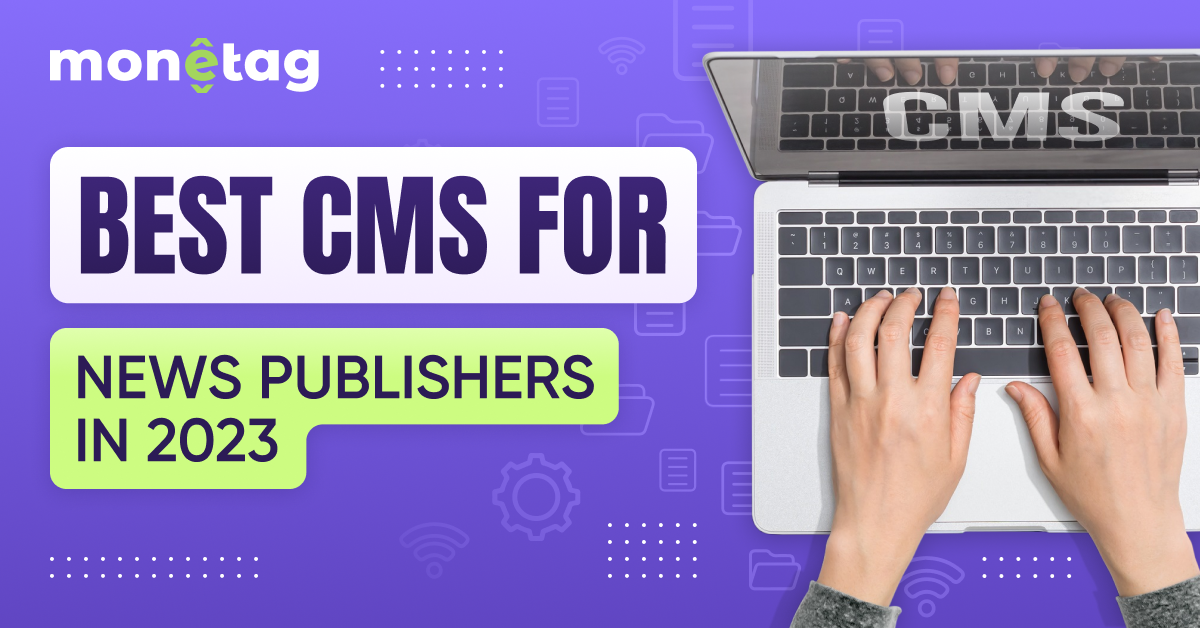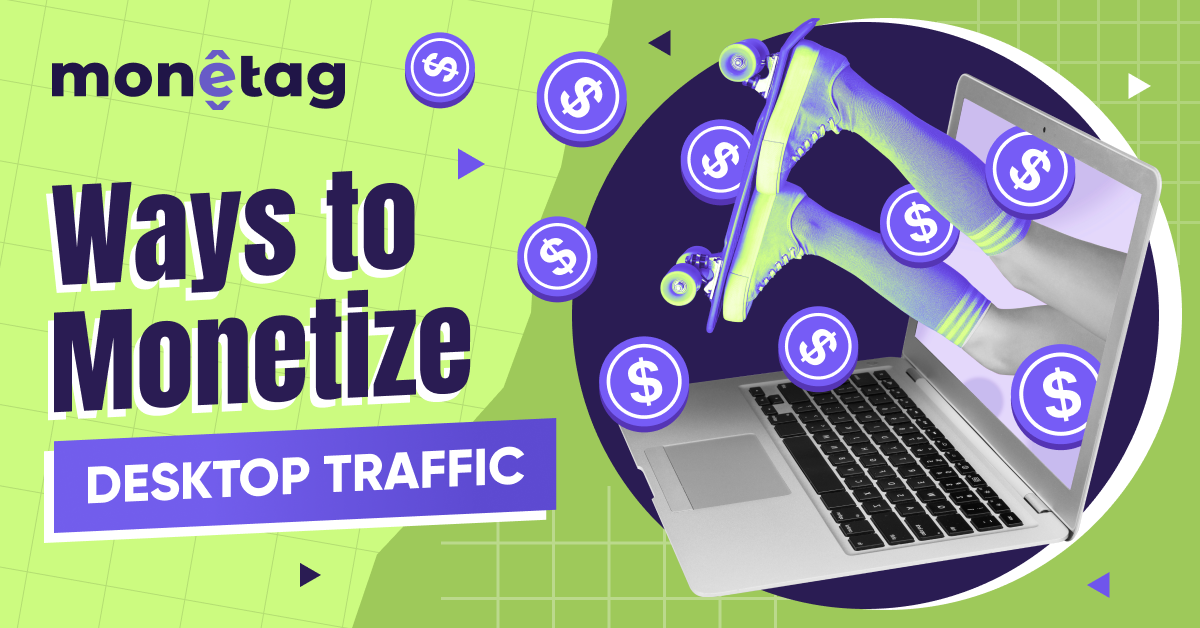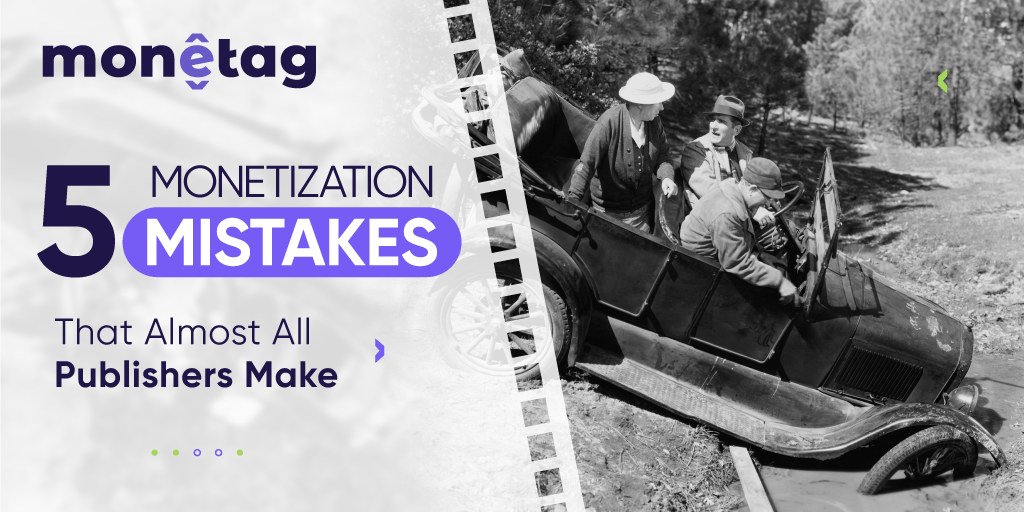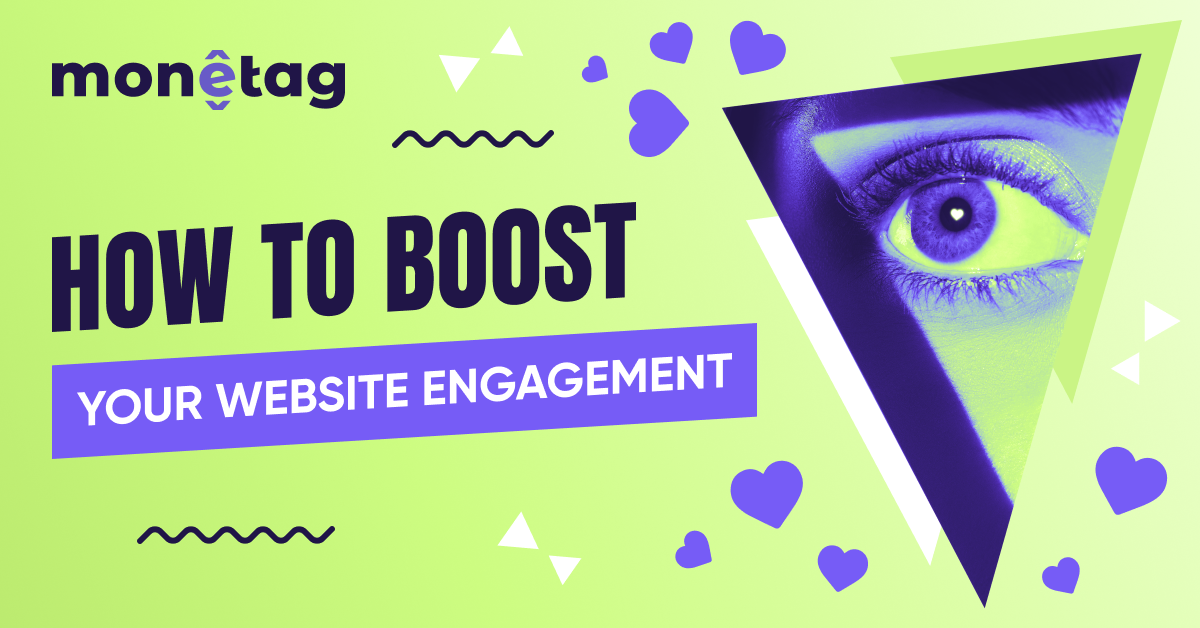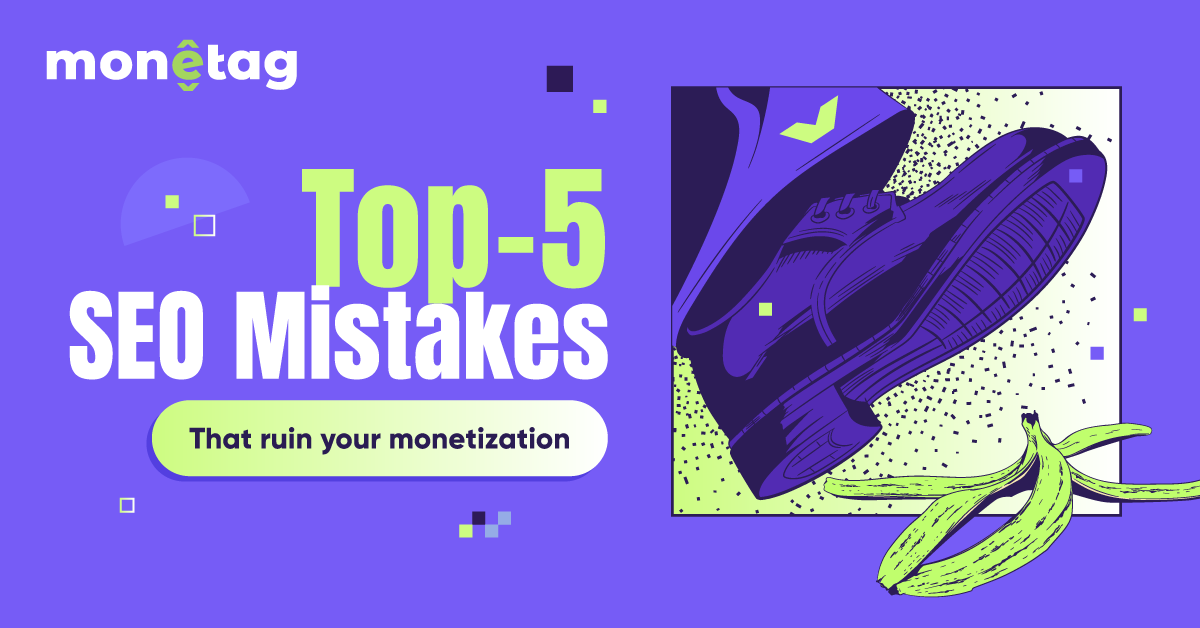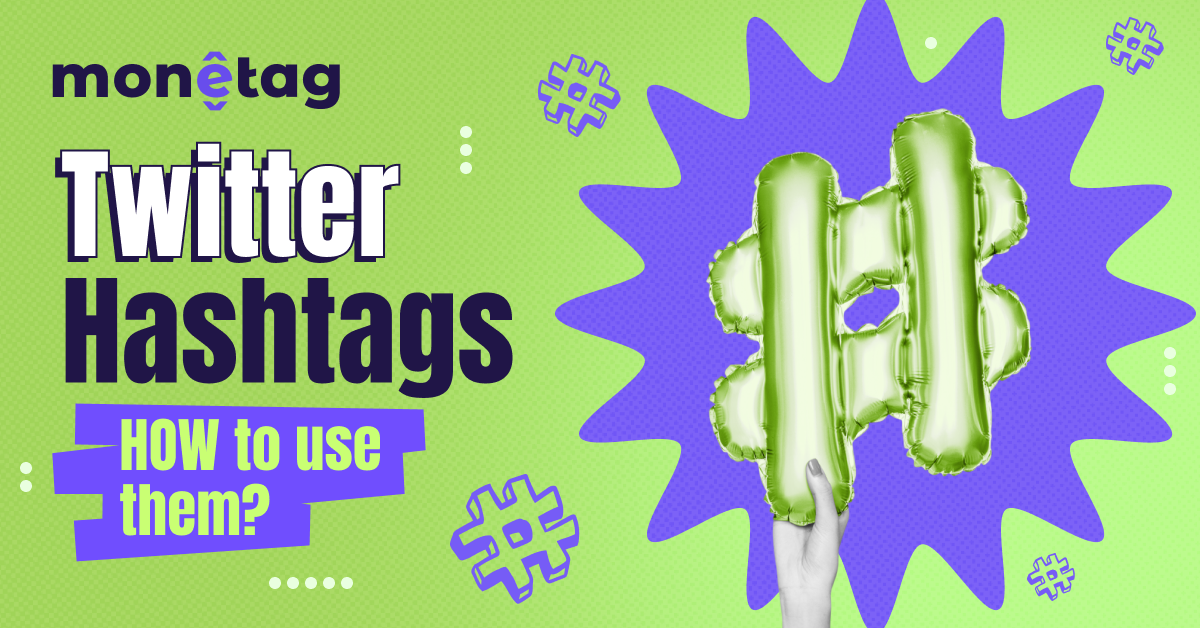Who Links to Your Site: Everything About Backlinks

This post is also available in:
Pt
Es
Imagine high-authority online publication links to your site – exciting, right?
But what if that platform is merely a messy collection of random links?
It emphasizes the importance of understanding backlinks. It’s less about “how many backlinks a website should have” and more about their relevance.
So, let’s embark on this journey to understand what is backlinking, how it influences your site’s SEO, and how you can manage your backlink management effectively.
The Impact of Backlinks on Your Website
Backlinks don’t just enhance your traffic; they’re a cornerstone of search engine optimization.
In essence, when platforms with high authority backlink to your site, Google perceives you as reputable. This can elevate your search result rankings.
But beware: backlinks from spammy sources can diminish your rankings. An excess of these harmful backlinks can even lead to the harshest Google penalty – complete removal from search results.
Hence, backlink monitoring and management are crucial.
Discovering Who Backlinks to Your Website: Essential Tools
Ready to dive deep into your website’s backlink profile? Understanding how to get backlinks and assess their quality is vital. Fortunately, numerous tools make this task easy.
We’ve highlighted the most popular and user-friendly ones to guide you through the process.
Google Search Control
Google has gifted webmasters with a powerful tool to understand their website’s backlink profile: Google Search Console.
Using the Google Search Console, you can get a list of all sites that link to yours — like here:
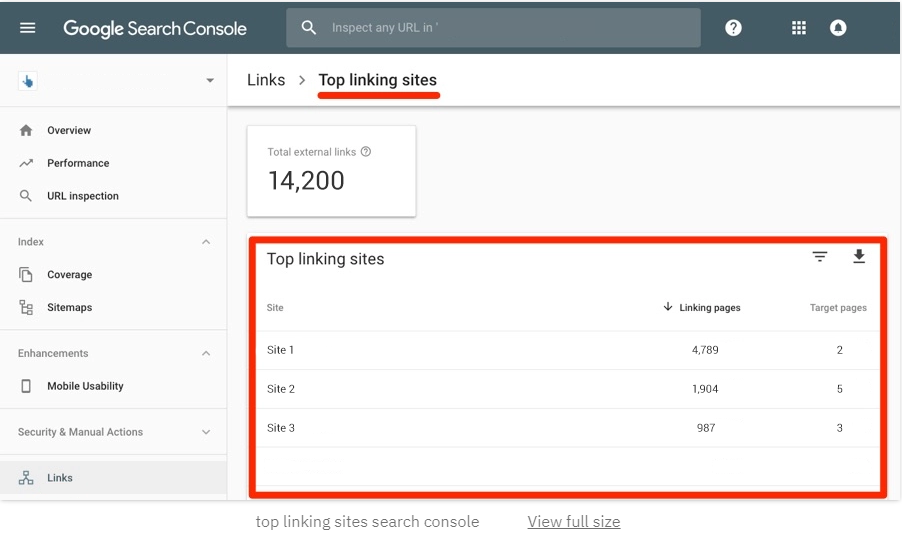
What do the results mean? Let’s straighten out:
- You have overall 14,200 backlinks leading to your site — from the whole web
- Most of them come from a single source — Site1.com.
- Site1.com has 4,789 pages containing a link to your website
- Your website has 2 pages that Site1.com links to.
Additional Insights: Google Search Console doesn’t stop at just showing you the numbers. It allows you to view:
- Your most frequently linked pages.
- The top sites that are generously linking to you.
- A summary of your most popular backlinks.
Best of all? Google Search Console is completely free to use. To get started, simply register and verify ownership of your website. This ensures the integrity of the data and maintains privacy for site owners.
Ahrefs Backlink Checker
If you’re seeking rapid insights about your website’s backlink profile, look no further than Ahrefs Backlink Checker.
You can perform a quick and easy backlink analysis even without registration. Just enter your website address into the checker’s field, and you will see how many backlinks you have and how many domains contain links to your site.
Besides, the free version shows you the top 100 backlinks and the top 5 pages that link to yours:
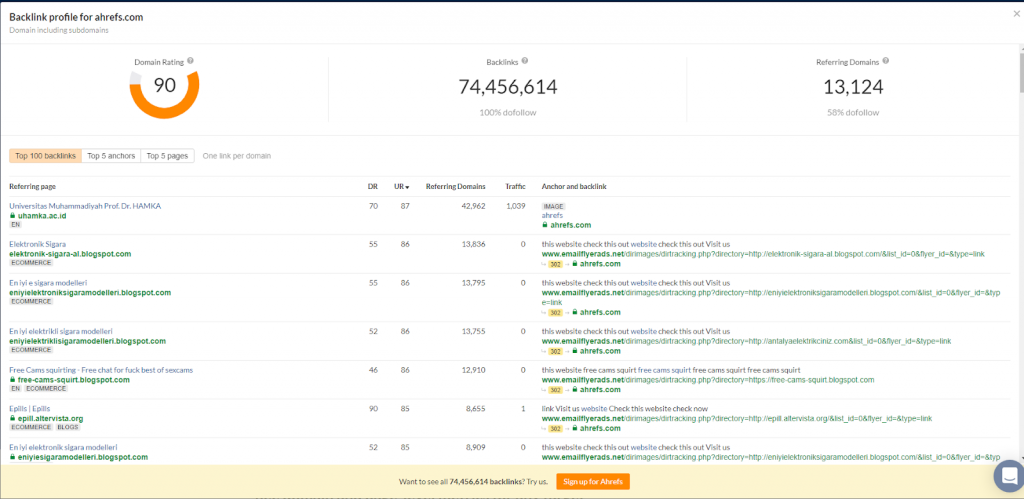
One of the best things about Ahrefs is that it’s very quick — probably the quickest way to get insights about your backlink profile.
What if you need more in-depth and detailed information, like the full list of backlinks? Sign-up and choose a subscription plan, then.
Prices start from €89 per month.
SEMRush Backlink Analysis
SEMRush, akin to Ahrefs, stands tall as a prominent tool in the realm of backlink research and analysis. It also gives you an idea of the number of all existing backlinks and linking sites:
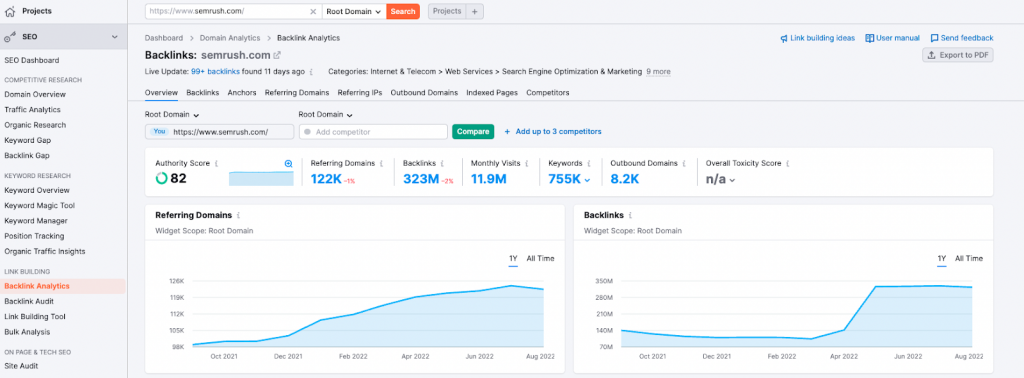
The paid version starts at $119.95. If you subscribe, you get access to the whole list of backlinks and their sources.
Moz.Com Link Research
Moz.com is another popular semi-free tool. Like Ahrefs and Semrush, it allows you to check how many backlinks you have and sort them by domain and link types.
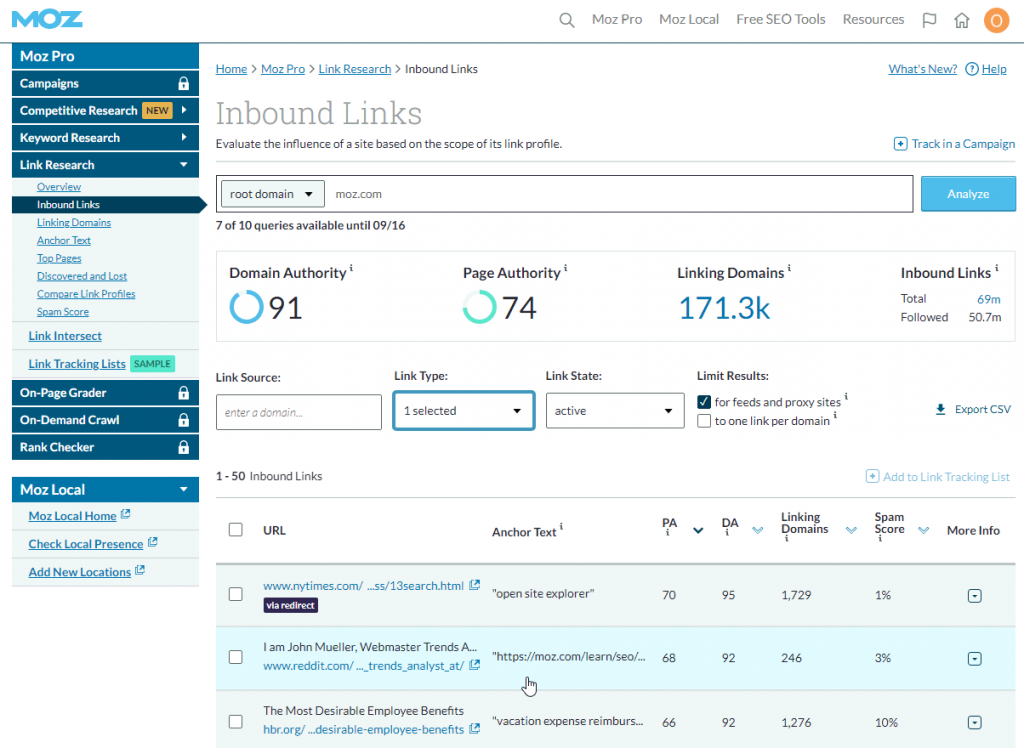
Besides, Moz can show your site’s Domain Authority and Page Authority. Domain Authority is a metric suggested exclusively by Moz: it’s not what Google checks officially.
Still, it gives a pretty accurate prediction of how much Google might trust your website.
To get access to all backlinks you have, you will need to switch to one of Moz’s paid plans, starting from $99 per month. Good news: there is a 30-day trial version.
Majestic Backlink Analyzer
This tool is an extension for Google Chrome, and it quickly provides you with precise information about any page you want to check.
The free version gives you a brief overview like this:
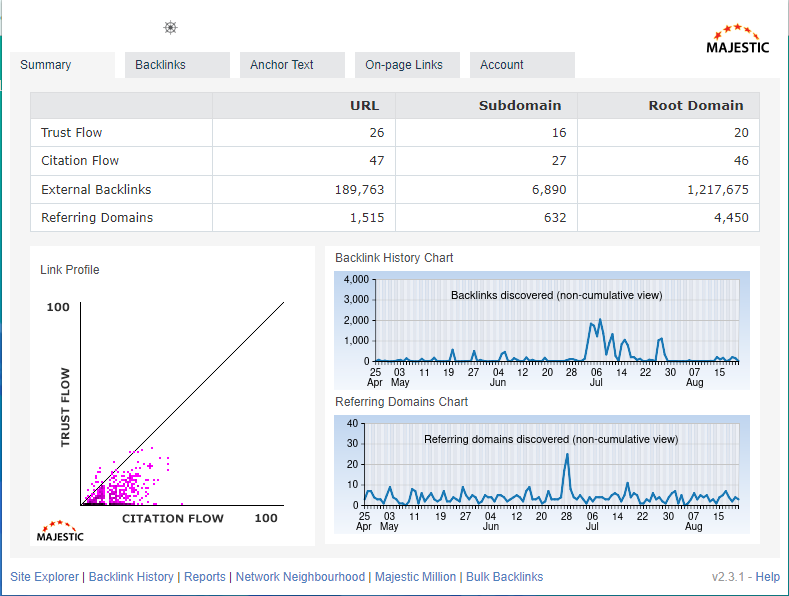
To unlock access to the Backlinks tab with the full list of links, you will need to purchase a paid plan from €46,99 per month.
How to Analyze Your Backlinks
Armed with your backlink list, it’s time to delve deeper and understand the implications of those links on your website’s SEO. The essence of backlink analysis revolves around these foundational principles:
- Identifying High-Quality Backlinks:
- Seek links from high domain authority sites.
- Ensure relevance to your site’s content.
- These links boost search rankings.
- Spotting Potentially Harmful Backlinks:
- Watch for links from spammy domains.
- Be cautious of rapid link influxes.
- Harmful links can hurt your SEO.
- Deciphering Backlink Trends for Strategy:
- Recognize which content gets linked often.
- Compare with competitors’ backlink profiles.
- Use insights to guide future backlink efforts.
Once you’ve sifted through your backlinks under these lenses, the subsequent steps involve formulating actions.
Whether it’s leveraging high authority backlinks, removing or disavowing harmful ones, or refining your backlinks strategy for the future, armed knowledge ensures you’re always one step ahead in the SEO game.
Shall we dive into the actionable steps next?
#1. Assess Site Quality
Begin by examining the websites that link to yours. Just because a site ranks high on Google doesn’t mean its backlink will be valuable to you.
Ensure backlinks come from relevant content. For instance, would a link from a top car magazine benefit your beauty blog?
It’s also crucial to gauge a site’s credibility. Tools like Ahrefs Website Authority Checker can provide insights into a site’s Domain Rating:
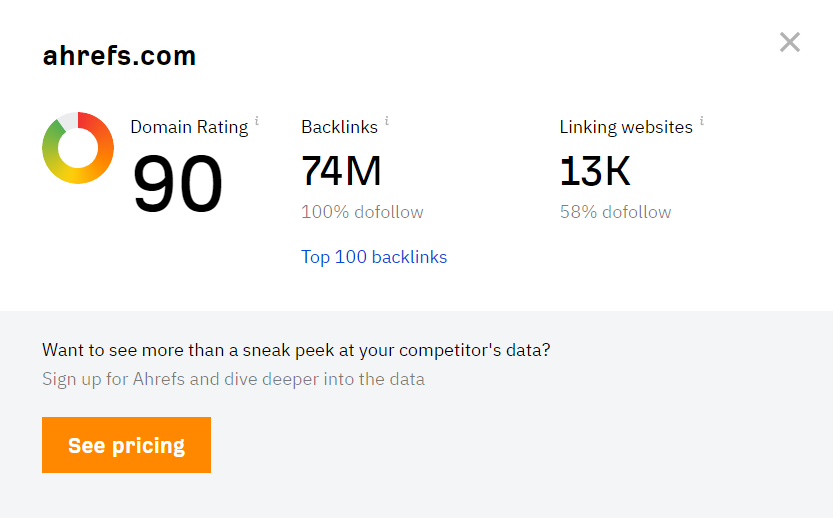
It’s pretty similar to Moz.com’s Domain Authority — so you can try both.
The most valuable backlinks come from relevant and highly-ranked sites or sites with a better ranking than yours.
Tip from Rizky Ramdandi, Monetag Publisher: “If a backlink brings huge traffic from an irrelevant website that is not part of our area, then it’ll spoil our SEO performance because we’ll get a bad bounce rate.”
#2. Anchors
An Anchor text is the visible part of the link — like this one:
— How to find the best CMS for Publishers?
This text is also important for Google rankings, so it must also be relevant to the linked content.
Good backlink anchors should contain keywords — but look native and natural at the same time.
Let’s compare some good and… not so good examples:
| Linked Page | Good Anchor Texts | Poor Anchor Texts |
| Links to your article about LinkBuilding | Read more about link building practices | Click here to learn more about link building |
| Links to your blog on SEO main page | Here is a great resource about SEO | https://www.SEO-blog.org |
As you see, just a URL of your website or a very simple CTA like ‘Click Here’ won’t work out well.
The backlink anchor should give Google an idea of what keywords are relevant to your site.
#3. Sites Flagged by Google
Google might penalize sites that don’t adhere to its guidelines. Such penalties can range from reduced visibility in search results to outright bans.
If a site linking to you is flagged or penalized by Google, its backlink can be detrimental to your SEO. It’s vital to be aware of these links, as they could jeopardize your own site’s standing with Google.
#4. DoFollow/NoFollow Links
Google’s algorithms consider various factors of backlinks, from anchor texts to their relevance. But not every backlink is treated equally.
Backlinks tagged with rel=”nofollow” are not factored into your search ranking. While they don’t directly influence your SEO, they can still drive traffic to your site if placed on high-traffic websites.
Conversely, NoFollow links from dubious sources won’t harm your SEO.
To discern between DoFollow and NoFollow links, you have several straightforward methods at your disposal:
1. Check the page source
Click the right mouse button at any place on the page: you will open the HTML code. Find the link you need in this code, and check if it has the rel=”nofollow” tag after it. If it doesn’t, the link is DoFollow, otherwise is not.
Here are these 2 steps:
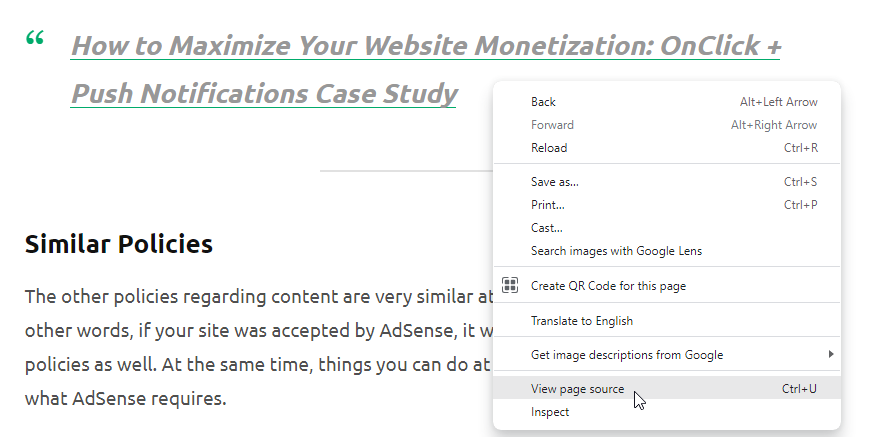
2. Download the Strike Out Nofollow Links Chrome Extension
It’s even easier — you install the extension, and it automatically strikes out all Nofollow links.
Here is an example from Travelful.net:
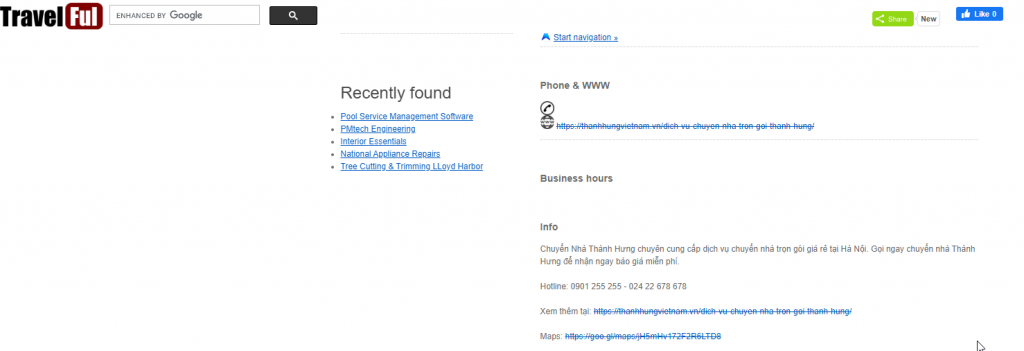
3. Check them with Moz.com
The tool we already mentioned instantly indicates if the link is NoFollow. You can even sort all links by the NoFollow tag and get the full list of them, or, on the contrary, exclude them from your search:
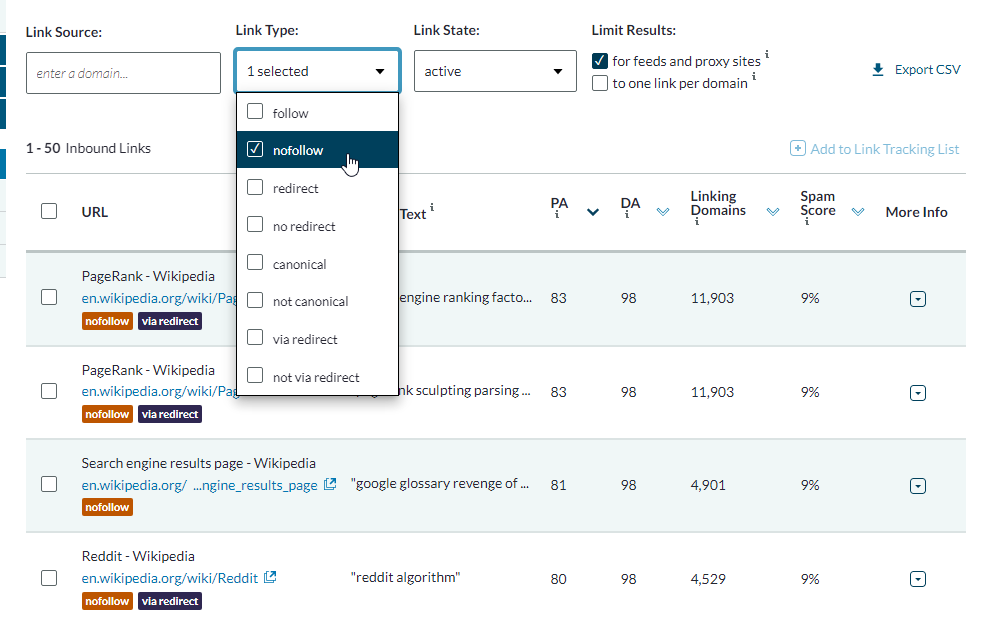
#5. Potentially Dangerous Links
The shadowy world of black-hat SEO techniques, like link farms, is a concern. These are platforms solely designed for link creation, and they’re not Google-approved.
If you discover links from such sources or spam/adult sites pointing to your domain, it’s alarming. Occasionally, these may be tactics by competitors to tarnish your site’s reputation.
Their goal?
To make it seem like you’re engaging in unsavory practices, potentially getting your site penalized by Google, which could hide you from organic search results.
#6. Broken URLs
When a link points to your site but lands on a 404 error, you’ve got a broken URL on your hands. Not only does this disappoint potential visitors, but it also hinders Google from properly assessing your site’s relevance, turning a potentially valuable backlink into a dud.
#7. Backlinks Quantity
How many backlinks are ideal? The truth is, there’s no magic number. While some SEO gurus advocate for around 50 backlinks to your homepage and about 100 for other pages, others believe that 15-20 quality links suffice, especially for budding websites.
The consensus among experts? Quality trumps quantity. Ten pertinent backlinks can be more beneficial than a hundred from dubious sources. As for toxic backlinks, it’s tricky. Google’s sophisticated algorithms often bypass them when determining rankings.
A savvy move: scrutinize the backlink profiles of higher-ranked competitors in your domain. Tools like Ahrefs or Semrush can offer insights. Remember, continual optimization is key; there’s always room for enhancement.
How to Improve Your Existing Backlinks
After you analyzed your backlinks as we recommended above, you need to take some further steps.
As you already know, backlinks can be either valuable or toxic.
Let’s sum it up:
| Good, valuable links | Bad, toxic links |
| Located at a relevant trustworthy source | Located at a site that has nothing to do with your topic or a farm link |
| The link source is not filtered by Google | The link source is under the Google filter |
| Have the right anchor SEO-wise | Have a poor or over-optimized anchor |
Suppose that armed with this checklist, SEO tools, and our analysis recommendations, you found out you have 150 good backlinks and 50 bad backlinks.
What shall you do next?
What to Do With Good Backlinks?
Quality backlinks are gold mines! It’s vital to harness their potential to drive more traffic and foster better relations. Here’s how:
1. Cultivate Fruitful Partnerships:
If a significant portion of your top-tier backlinks originates from a relevant, reputable site, consider deepening this association. A site that frequently cites yours might be open to continuous collaboration. Mutual content-sharing or regular linking agreements can further cement this relationship.
2. Amplify Your Content
Use the tools mentioned earlier to pinpoint your website’s most linked-to pages. This insight reveals which content segments resonate the most. Leverage this knowledge to produce similar, high-impact content or further promote these popular pieces.
Once you’ve identified the content pieces that garner the most backlinks, it’s essential to ensure they continue to shine:
- Keep It Fresh: Ensure your information remains up-to-date. Periodically review the content to weed out any outdated data or facts.
- Maintain Accessibility: Continual site checks are vital. Ensure that these popular pages are always accessible and not leading to any 404 errors.
- Repair Broken Links: If you come across broken URLs, address them promptly to maintain a seamless user experience.
- Revise and Refresh: Given the page’s popularity, consider updating it with the latest trends or insights related to the topic. This not only keeps the content fresh but also signals to search engines that you’re providing updated information.
What to Do With Bad Backlinks?
Even though not all bad backlinks will harm your site, it’s crucial to address the ones that might. Here’s how you can handle them:
1. Identify Harmful Links:
Use tools like Ahrefs, SEMrush, or Moz to pinpoint potentially toxic backlinks.
2. Reach Out:
Politely ask the site owners to remove the undesired link. While this approach might not always work, it’s a good initial step.
3. Use Google’s Disavow Tool:
If outreach doesn’t yield results, turn to Google’s Disavow Tool. This allows you to tell Google which links you’d like it to ignore when assessing your site. Be careful not to disavow every link that seems suspicious to you – as in Google’s words, this tool should be used with caution:

On top of that, be aware of black-hat-SEO threats. Some might threaten to harm your SEO with malicious backlinks, as seen in this example:
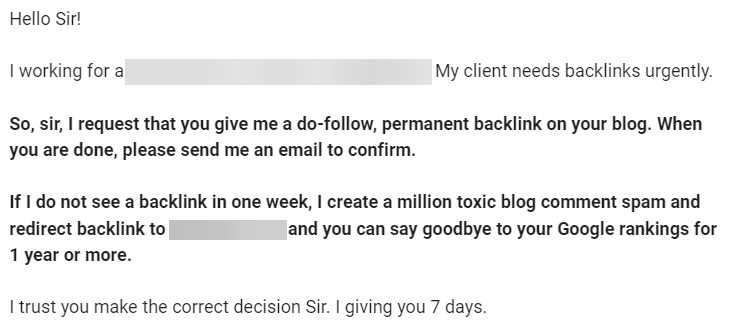
4. Monitor Regularly:
Bad backlinks can pop up anytime. Regularly audit your backlink profile to ensure you’re not blindsided by harmful links.
5. Strengthen Your Backlink Profile:
Offset potential harm by building more high-quality backlinks. The more authoritative, relevant links you have, the lesser the impact of a few bad ones.
Remember, while removing harmful backlinks is essential, focusing on building a strong and diverse backlink profile is the best long-term strategy.
How to Create More High-Quality Backlinks: Dos and Donts
If you feel that you need more high-quality backlinks, here you go!
Remember that link building is a long and pretty difficult process — but with the right approach, it will pay off!
Use these two checklists as guides on expanding your backlink profile and things you should avoid.
Dos:
- Find relevant platforms with content similar to yours
- Try sticking to popular sources that have the same or more visitors than yours
- The older the platform is, the more valuable it is for your link-building
- Check if the site is ranked by Google and has a good Domain Authority
- Create unique content that will attract users to your site
- Be pro-active: submit your outreach articles or suggest link exchange with valuable platforms
A tip from Ramu Chelloju, Monetag Publisher: “My link structure strategies include creating infographics and guest advertisements.:
Donts:
- Don’t purchase links — it’s prohibited by Google Policies
- Avoid leaving links to your site in comments: they might either be marked as NoFollow or spam
- Don’t waste your time on backlinks on social networks like Reddit or Facebook: such platforms always mark all links as NoFollow
- Be careful with user-generated content platforms: backlinks on them might be regarded as spam by Google
A tip from Monty Mehta, Monetag Publisher: “I don’t usually build links for my website intentionally. I prefer writing good content instead — so people automatically link my site to their sites.”
In Sum…
We hope you’ve enjoyed learning about the fundamentals of managing backlinks!
It’s crucial to emphasize that prioritizing your content should take priority—so don’t solely depend on SEO. Even best practices can only go so far without distinctive articles, captivating content, or a user-friendly design.
Explore our blog for additional tips—and begin monetizing your site today!


